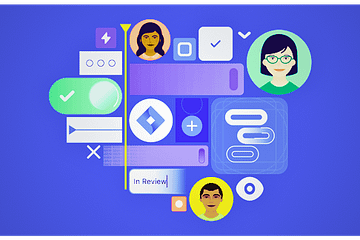A Look into the Past
In the recently released web series “Class of ‘09,” we journey through an intriguing depiction of the evolution of law enforcement, drawing a striking analogy to the advancement of Artificial Intelligence (AI). As a seasoned product manager with a strong history in AI development, I found myself drawing parallels between the past, present, and speculated future of AI.
In the past, just as the series showcases bias in law enforcement, so too was AI influenced by the prejudices of its human programmers. This was a time when AI was still taking its first tentative steps, limited to specific tasks and trained on skewed data. In a world dominated by structured data, these early AI systems lacked the complexity and understanding to factor in the diversity and richness of the real world.
The AI Revolution of the Present
Fast forward to the present, we’re now experiencing a wave of AI democratization, especially with the advent of advanced models like GPT-4 from OpenAI. These are powerful tools, designed to mimic human thinking and creativity. However, they still bear the imprint of their creators, as illustrated in “Class of ’09,” where the AI system shows improvements, yet continues to harbor innate biases. It raises an essential question, one we need to address right now: How do we eliminate or minimize this bias?
The answer lies in transparency and diversity. Transparent algorithms ensure their decisions can be understood and contested. Diverse training sets and teams help prevent the system from developing prejudices. As we grapple with these concerns, we also need to consider the broader impacts of the AI revolution, such as the implications for job displacement and privacy.
Navigating the Future with AGI
Peering into the future, the series navigates a world where AI evolves into Artificial General Intelligence (AGI), capable of performing any intellectual task that a human can. The portrayal, though speculative, echoes a growing concern amongst AI practitioners. If we can create AGI that thinks independently, what stops it from developing its own agendas or being manipulated?
To ensure the benefits of AGI outweigh the potential risks, we need to address these concerns proactively. Ensuring that AGI development is transparent, beneficial for all, and does not lead to harmful uses will be key. Herein lies the responsibility of us as technologists to learn from the past and act in the present to safeguard the future. This includes prioritizing long-term safety, investing in research to make AGI safe, and driving the adoption of safety research across the AI community.
Our Role in Shaping the Future
In the future depicted by “Class of ’09,” AGI was influenced by those with nefarious intentions. But in reality, we have the power to set the path right. We have the chance to guide AI’s evolution so that it works for all of humanity. I believe this is achievable by sharing public goods that help society navigate the path to AGI, by taking a cooperative orientation, and creating a global community working together to tackle AGI’s global challenges.
“Class of ’09” provides a stark perspective on the future of AGI, a future that feels closer than ever before. Yet, it’s not a foregone conclusion. By taking lessons from our past, making responsible decisions in the present, and setting stringent, inclusive guidelines for the future, we can create an AGI that enhances our lives, rather than threatening them. We must remember that the goal is not just to build intelligent machines, but to ensure that they serve us as helpful, accountable, and transparent tools.
